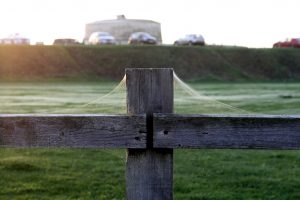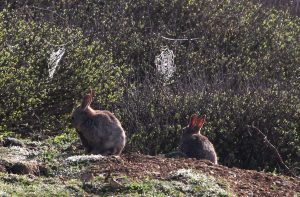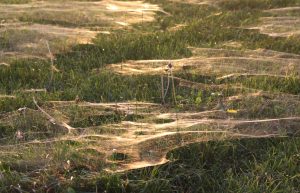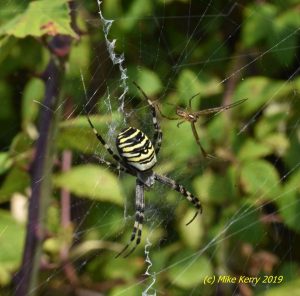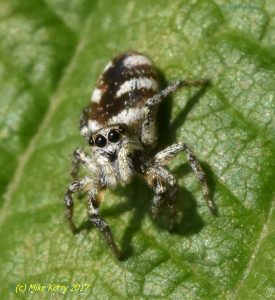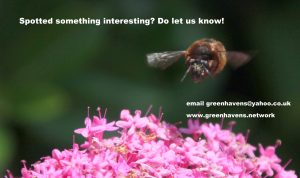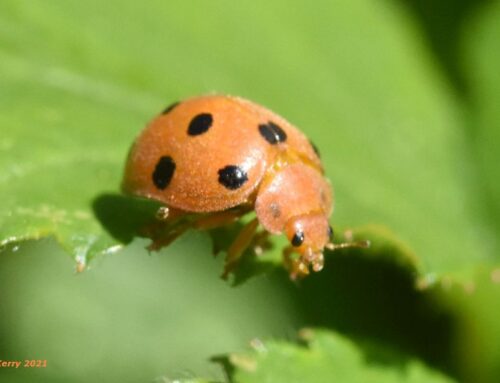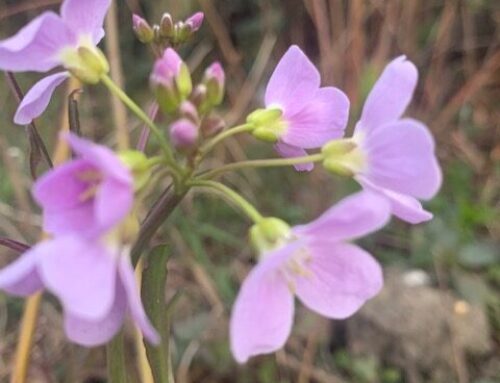A few years ago, we woke up to an amazing sight on the Martello Fields in Seaford, it looked like the whole field had been decorated for Halloween the following night!
The early morning dew can make droplets of water vapour, condense on the silk of spiders’ webs, making early morning a good time to spot these amazingly intricate webs, like these on Seaford Head.
Building a web is a fascinating process. Spiders manufacture the exceptionally strong silk in their bodies and use their leg to pull it out of different ducts on their abdomen. The trickiest part is starting it off, connecting two ends across a space (such as fence posts or branches). then the spider makes a vertical line, and joins up the three strands in a closed V shape. Next it makes more radii into spoke shapes, and then fills in the spokes with strengthening horizontal strands. When finished this is all very pretty and strong, but won’t catch any flies. Next the spider produces sticky threads, in fact digesting the original spiral strengthening thread and replacing it with an adhesive one. It’s a time consuming process, but one that is very good at catching it some prey to eat! (source RSPB book “Secret lives of Garden Wildlife”, Dominic Couzens)
The webs in the fields appeared in sparkling sheet right across the fields, and draped from every single fence post. A quite extraordinary sight!
After some research, it seems likely that these webs were the result of “ballooning”
Ballooning is a behaviour in which spiders and some other invertebrates use airborne dispersal to move between locations. A spider or spiderling after hatching will climb as high as it can, stand on raised legs with its abdomen pointed upwards and then release several silk threads into the air. These form a kind of parachute to carry the spider away on the breeze. Apparently the Earth’s static electric field may also provide lift when there is no wind!
The same year, the same effect was spotted near Hastings
Jess Price, a conservation officer at Sussex Wildlife Trust, said: ‘This is gossamer, which is the name for the silver sheets of silken webs that remain when millions of money spiders balloon away from a site at the same time.’
Mike Kerry has spotted and photographed some fantastic spiders in the Last Wood and his garden in Seaford. Here are a few of them with Mike’s kind permission! Arachnophobes look away now!
This Halloween do get outside and find some real spiders!
If you have spotted any interesting wildlife , we would love to hear from you




